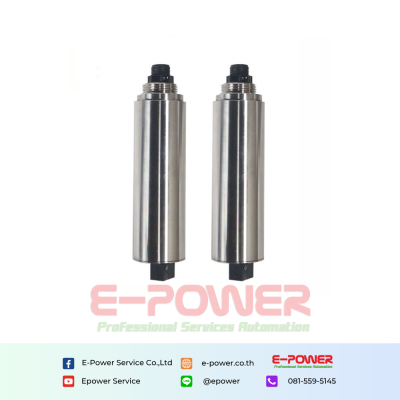
DS305 Online Blue Green Algae Sensor for Water Quality Testing
Overview:
A Blue-Green Algae Sensor is a device designed to detect the presence of blue-green algae (also known as cyanobacteria) in water bodies such as lakes, rivers, and reservoirs. Blue-green algae can produce harmful toxins that pose a threat to both aquatic ecosystems and human health. These sensors help monitor water quality, enabling early detection and preventing potential contamination.
The DS305 online blue-green algae sensor adopts the principle of the fluorescence method, which is more efficient and faster than the traditional manual counting method, and can be monitored online in real time. The sensor has better repeatability and stability. With an automatic cleaning brush, it can eliminate air bubbles, reduce the influence of contamination on measurement, make the maintenance cycle longer, and maintain excellent stability for long-term online use. It can play an early warning role in the reproduction of algae.
Features of the blue-green algae sensor:
- Digital sensor, RS-485 output, supports MODBUS.
- With an automatic cleaning brush to prevent contamination and eliminate air bubbles.
- Direct measurement is easier than traditional manual counting.
- Online continuous monitoring, real-time control of water quality dynamics.
Technical parameter:
| Product name | Blue-green algae sensor |
| Detection principle | Fluorescence |
| Measurement range | 0-270,000 cells/mL |
| The detection limit | 300 cells/mL |
| Resolution | 1 cells/mL |
| Linearity | R2>0.999 |
| Temperature range | 0-50°C |
| Output signal | RS-485, MODBUS protocol |
Specification
| Product name | Blue-green algae sensor |
| Detection principle | Fluorescence |
| Measurement range | 0-270,000 cells/mL |
| The detection limit | 300 cells/mL |
| Resolution | 1 cells/mL |
| Linearity | R2>0.999 |
| Temperature range | 0-50°C |
| Output signal | RS-485, MODBUS protocol |
| Waterproof level | IP68 |
| Under pressure | 1bar |
| Product material | SS316/Titanium |
| Product Size | Φ45 X 175.8mm |
| Power information | DC 6~12V, current <50mA |
| Cable length | Standard 5 meters, longer can be customized |
- หน้าหลัก หน้าหลัก
- สินค้าอุตสาหกรรม สินค้าอุตสาหกรรม
- สินค้าเซนเซอร์ สินค้าเซนเซอร์
- บริการของเรา บริการของเรา
- บทความและข่าวสาร บทความและข่าวสาร
- ติดต่อเรา ติดต่อเรา



